There are few better ways to start your day than with a cup of coffee and a decadent cheese omelette. Take your cheese omelette to the next level with our best 19 cheeses to use in an omelette.

SEE ALSO: Level up your Mac & Cheese with these amazing cheeses →
What is an omelette?
An omelette is a dish made from beaten eggs, fried with butter in a frying pan. As opposed to scrambled eggs, you don’t stir the contents to break them up while cooking.
When it comes to which ingredients you can add to an omelette, there is no set rule. Indeed, depending on your personal preferences, you can use chives, tomatoes, bacon, mushrooms, onions, spring onion or, our personal favourite, cheese.
If you’ve tried your hand at making a cheese omelette, you will know that not all cheeses will work here. Because you need to find just the right balance between flavour and texture. So, let’s have a look at our picks for the best cheeses to use in an omelette.
1. Mozzarella
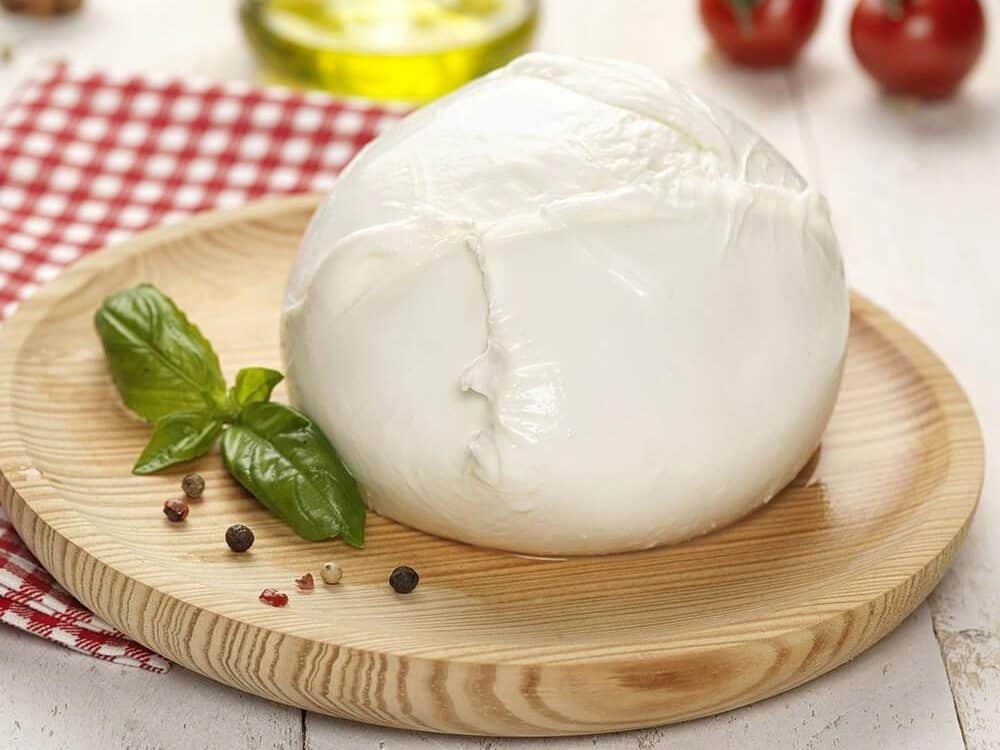
First on our list we have America’s favourite cheese and there’s lots to love about Mozzarella. This traditional Italian pasta filata cheese is readily available from almost anywhere in the world. While you might not have access to the original Mozzarella di Bufala, a cow’s milk version called Fior di Latte will work just as well in your omelette.
Both Buffalo Mozzarella and Fior di Latte have got a subtle milky flavour. But where they truly excel is in the texture department. Indeed, apply a bit of heat and Mozzarella becomes a dreamy, stretchy mess that will give you the perfect start to your day.
2. Cheddar
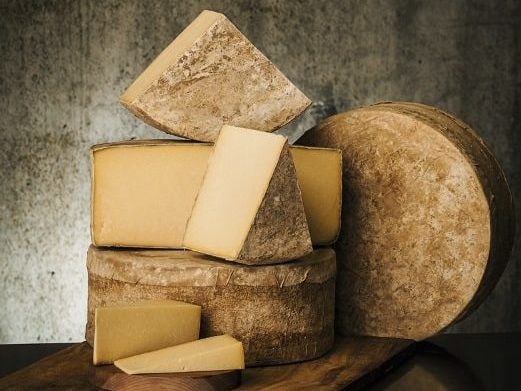
Originally from Somerset, England, Cheddar has grown in popularity worldwide to become the world’s most popular cheese. Without a doubt, this pressed uncooked cheese is incredibly versatile. As a matter of fact, a properly made Cheddar can be served as a table cheese or be added to almost any recipe.
Unsurprisingly, the flavour and texture of Cheddar varies depending on its age, rind and maturation environment. Young cheeses are very mild, creamy and smooth. Also, their texture is slightly buttery, moist and very meltable.
Because of this, they tend to be the best choice for a cheese omelette. Having said that, you can also use a more mature Cheddar for more complex flavours. However, you won’t quite achieve the same level of cheese pull.
3. Monterey Jack
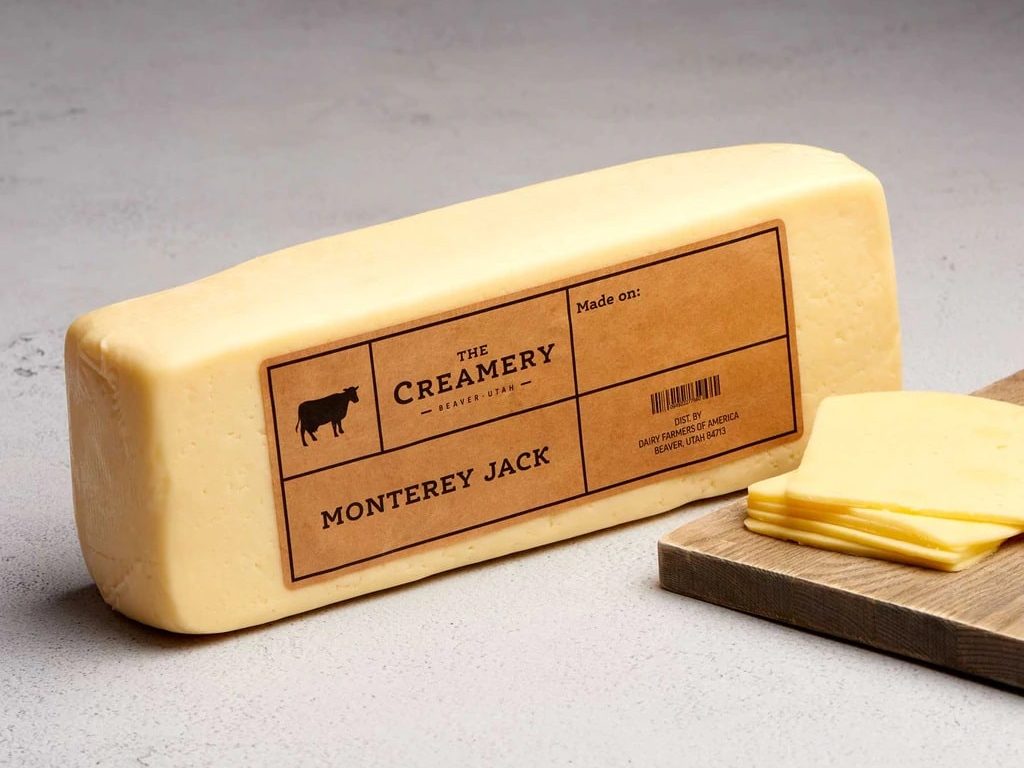
Another American favourite is Monterey Jack. This pressed cheese finds its roots in Monterey, Alta California. This cow’s milk cheese is often referred to as an American original. But it is actually heavily influenced by a Franciscan monastic cheese dating back to the Spanish rule in the early 19th century.
While there are many versions of this cheese, including Pepper Jack and Dry Jack, a young Monterey Jack will be most suited to making a cheese omelette. The reason for this is the combination of subtle flavours and a high moisture level.
The extra moisture means that the young cheese melts more spectacular and will achieve a cheese pull comparable to Mozzarella.
4. Gruyère
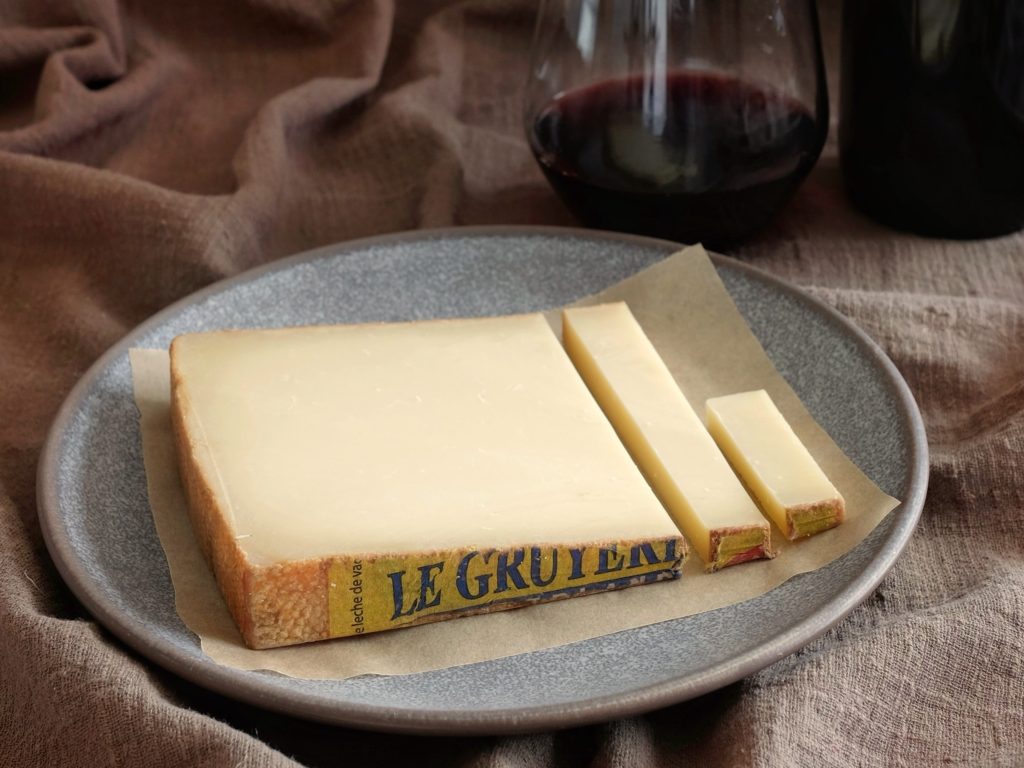
Gruyère might just be Switzerland’s most famous cheese. While its origins date back to the early 12th century, local artisans still make to this day using the same, traditional methods.
Moreover, only a select number of artisanal cheesemakers in a handful of cantons in Switzerland are allowed to produce Gruyère. And, they always use the finest local raw cow’s milk.
Between 6 and 9 months of age, this famous cheese has a soft and refined taste with sweet notes. From 10 months onwards, it is referred to as Réserve and has a full-flavoured and aromatic taste. Once again, our recommendation is to choose a younger Gruyère to find the right balance between flavour and texture.
5. Emmentaler
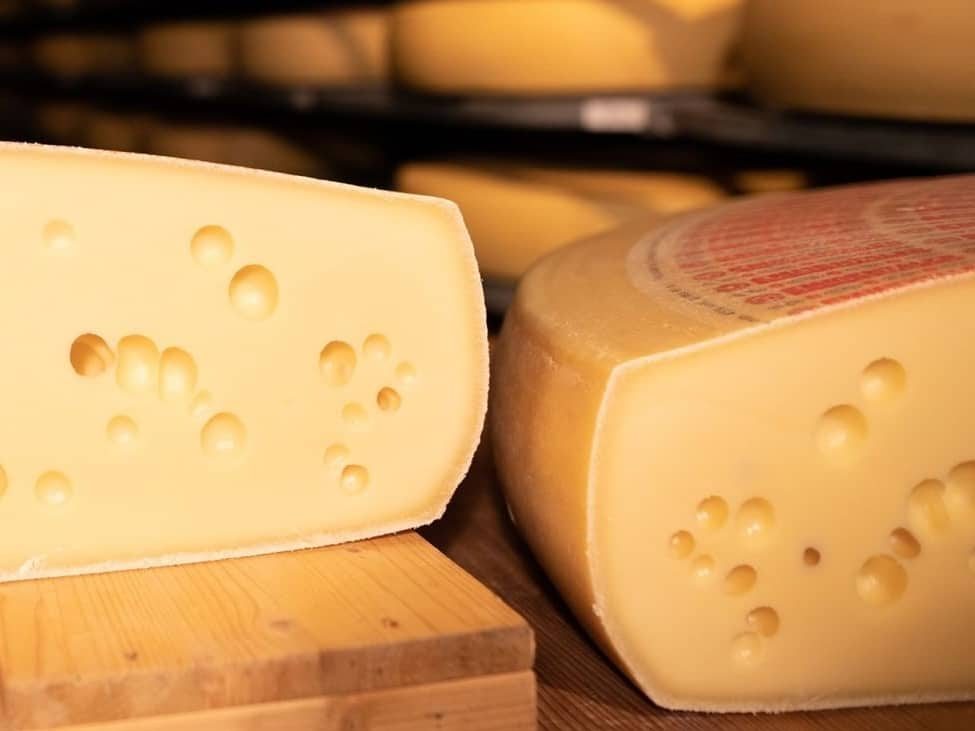
When most of us think of Swiss cheeses, the one we actually picture is Emmentaler. Weighing in at 120kg, Emmentaler is Switzerland’s largest cheese and is instantly recognisable thanks to its large eyes.
And, it is also one of the largest cheeses in the world! Effectively, local cheesemakers release wheels of this cheese for consumption at different ages.
At 4 months, the young cheese is mild and nutty. By 8 months (called Réserve), it becomes much fruitier. Finally, at 12 months, it develops a full-flavoured complexity and a crumblier texture.
Unlike Gruyère, we actually recommend a more mature Emmentaler to use in an omelette. This is because a Réserve cheese will still melt beautifully and add more depth of flavour.
6. Raclette
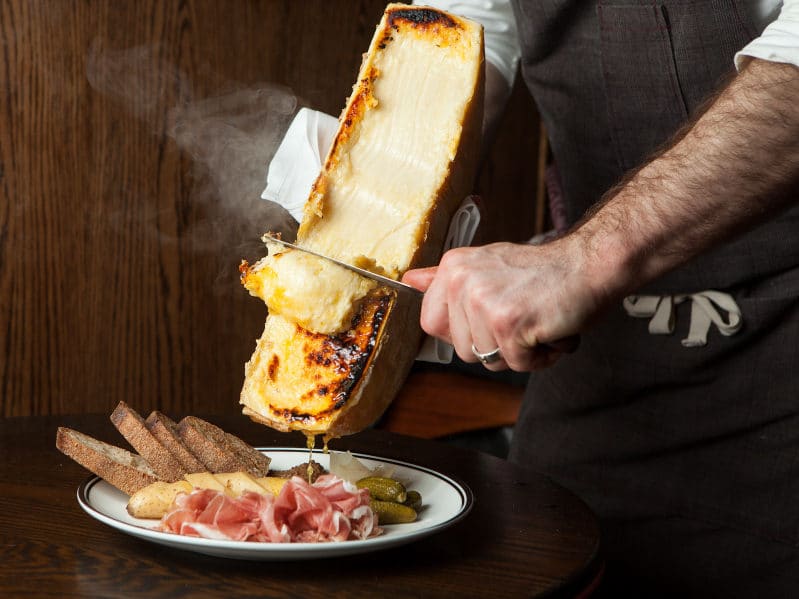
I’m sure you’ve all heard of Raclette before. But scraping it off a hot wheel is not the only way that you can enjoy this Swiss mountain cheese. The term raclette refers both to this type of cheese, and the dish it has inspired.
Actually, the name comes from the French word racler which means “to scrape”. Presently, it is made in the Alps near the border of France and Switzerland.
At 12 weeks, Raclette develops an orange to brownish-orange natural rind wrapped around a straw-coloured paste. While the aroma can be moderate to strong, the cheese’s flavour is very delicate with savoury notes of hazelnuts and broth.
When melted, the aroma and flavour are tantalisingly elevated. Hence, it is the perfect ingredient for an omelette if you want a little bit of punch.
7. Brie de Meaux
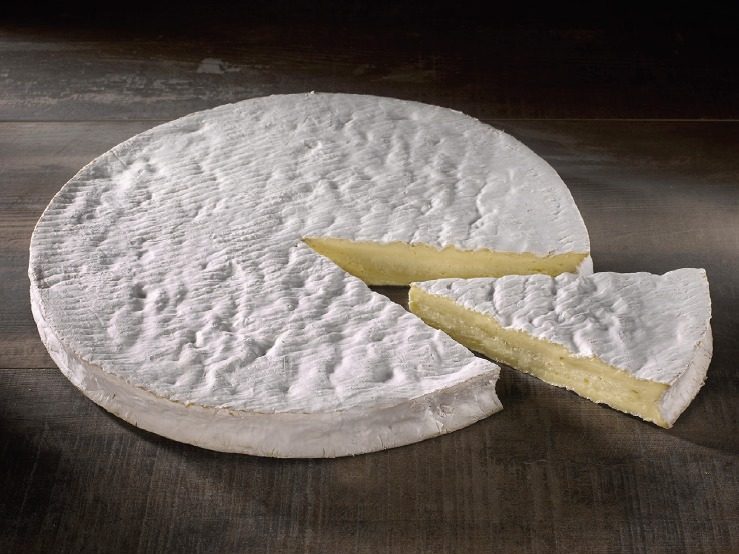
Brie de Meaux is a traditional soft white mould cheese that is made in the Ile-de-France region of France. It is one of only two Bries to have been granted an AOP stamp. This cheese has traditionally been made in the region for more than 400 years.
Like most white mould cheeses, Brie ripens from the surface towards the centre. As such, the best time to enjoy a Brie is when at least half the thickness is soft and creamy and the centre is still a bit firm and chalky.
By this point, the paste has developed a distinct straw colour and is smooth and velvety at room temperature. On the palate, it is sweet and buttery with tantalising notes of mushrooms and almonds. And if you add Brie to your omelette, you don’t even need mushrooms to get the flavour!
8. Comté

In many ways, Comté draws its inspiration from Swiss Gruyère. This pressed cooked cheese originates from France’s Jura mountains. As a matter of fact, Comté is one of the most popular AOP cheeses in France.
Moreover, the AOP dictates that it has to be made with local raw cow’s milk and matured in mountain cellars
At 18 months, Comté has a rich concentrated nutty texture, elegant caramel sweetness, and lingering kaleidoscope of flavours. Moreover, its texture melts beautifully when heated. This makes it the perfect addition to an omelette if you want to nail both flavour and cheese pull.
9. Chèvre
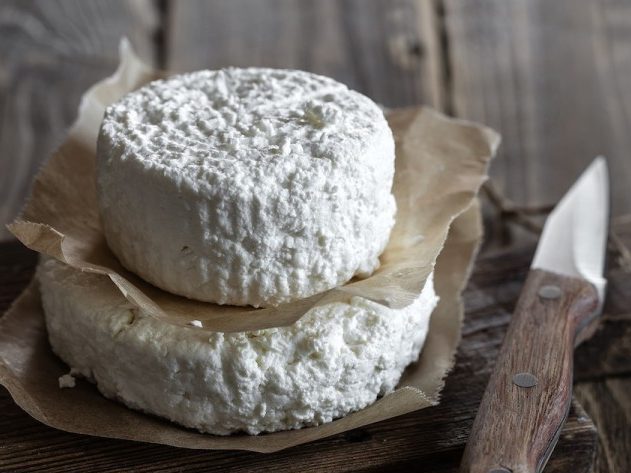
The first goat’s milk cheese on this list is a fresh chèvre. Chèvre is a French word that translates to both “female goat” and cheese that is made using goat’s milk. Fresh chèvre is a very popular unripened soft cheese in both France and around the world. It is typically pristine white and rindless and has a very spreadable texture.
Moreover, this type of cheese is usually consumed within two to three days of production and exhibits qualities that are the most closely related to the milk it is made with. As such, you can expect a “goaty” tang with notes of milk and citrus.
10. Roquefort
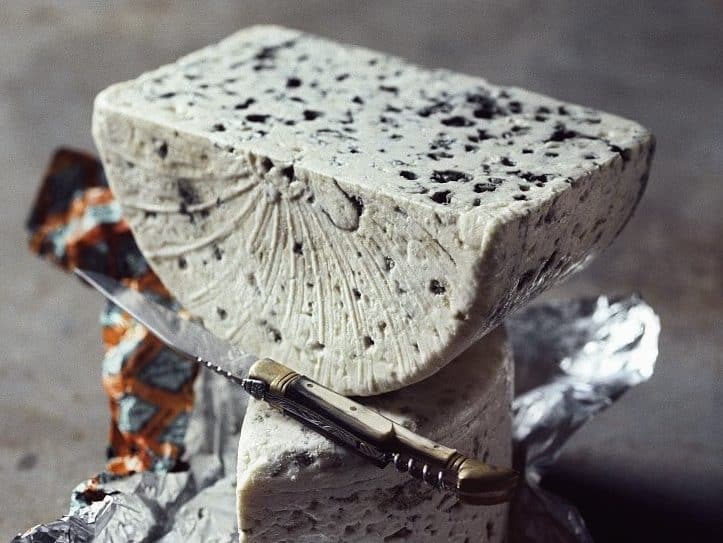
Our next cheese is a sheep’s milk blue that will knock your socks off! Roquefort is a traditional French blue cheese made in the Aveyron department. Undoubtedly, it is one of the world’s best-known cheeses and dates back to at least the 15th century. It bears an AOP stamp which protects its origin and production.
At 90 days, Roquefort has a moist velvety ivory paste that is mottled with delicate blue-green pockets and lines of mould. Overall, its aroma is reminiscent of forest undergrowth. And its flavour is spicy with a long grassy finish.
Unsurprisingly, Roquefort will add a certain element of sophistication to your omelette. However, if you are looking for a cheese pull, you will want to combine it with another cheese. Our tip is to go for a Comté or Gruyère!
11. Parmigiano Reggiano
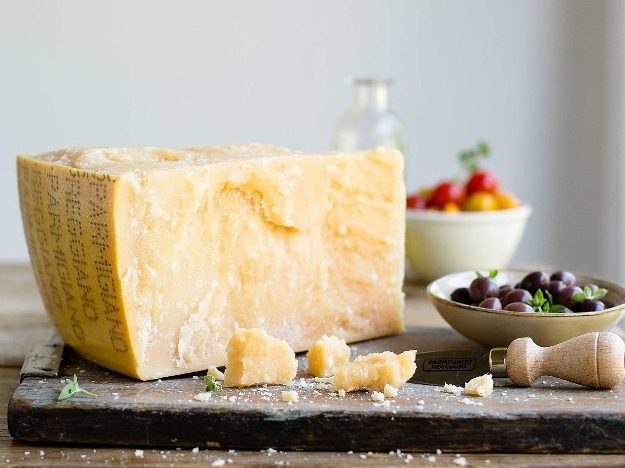
Without a doubt, Parmigiano Reggiano is the King of Italian cheeses. Effectively, we can trace back the origins of this traditional Italian cheese to the Middle Ages. Back then, Benedictine and Cistercian monks were the first to produce what has now become an iconic cheese.
Unsurprisingly, the flavour of Parmigiano Reggiano varies depending on its age. At 18 months, the cheese has a harmonious and delicate flavour with scents of milk, yoghurt and fresh butter. On the other hand, a 24-month wheel is soluble, crumbly and grainy with the perfect balance between mildness and tastiness.
Furthermore, you can expect notes of fresh fruit, nuts and meat broth. Because of the complexity of flavour, this is our pick for an omelette. But if you want some cheese pull, we recommend you also add the next cheese on our list, Fontina!
12. Fontina
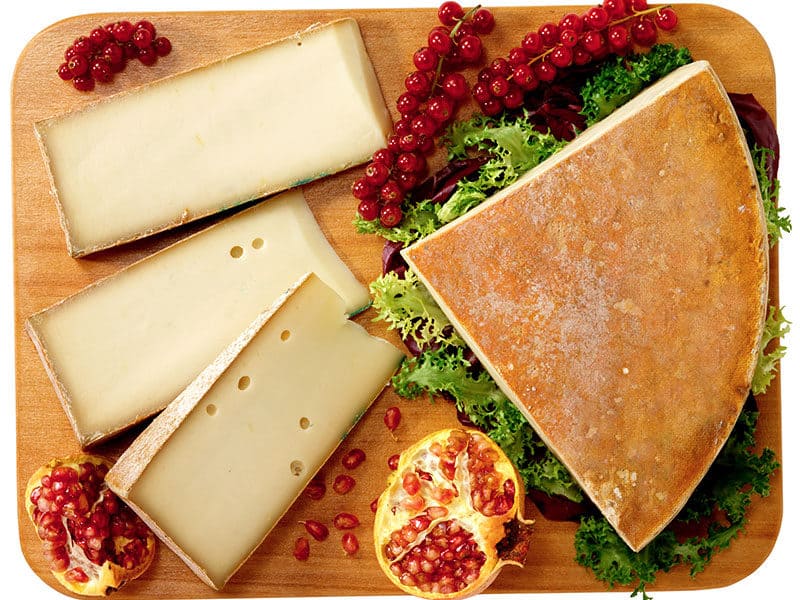
Fontina is a cow’s milk cheese that originates from the Aosta Valley in the Italian Alps. Actually, its history in the region dates back to the 12th century. The region is famous for its grasslands, caves and crevices. And Fontina made in the Aosta valley express the best of the local terroir.
The characteristic flavour of Fontina is mild but distinctively nutty and savoury. But it is mostly known for its texture when melted. In a similar way to Raclette, this Italian wonder brings together the best of flavour and melt.
To make a cheese omelette, you can certainly use Fontina on its own. But if you want to take things to the next level, combine it with Parmigiano Reggiano and the Italian blue cheese that comes next.
13. Gorgonzola Dolce

Gorgonzola is a soft blue cheese that finds its roots in the small Italian town of Gorgonzola. Actually, this quaint township is located in the larger Milan metropolitan region.
Back in the day, cow herders would stop in the village to milk their cows on their way up or down the Italian Alps. This would happen during spring and autumn.
A young Gorgonzola will be about three months old. Overall, it has an incredibly creamy texture with a sweet and subtly spicy flavour. As a matter of fact, its moisture content is much higher than other famous blues such as Roquefort and Stilton.
Due to its mild flavour, it is a great gateway cheese for people who might be reluctant to try a blue cheese.
14. Provolone Dolce
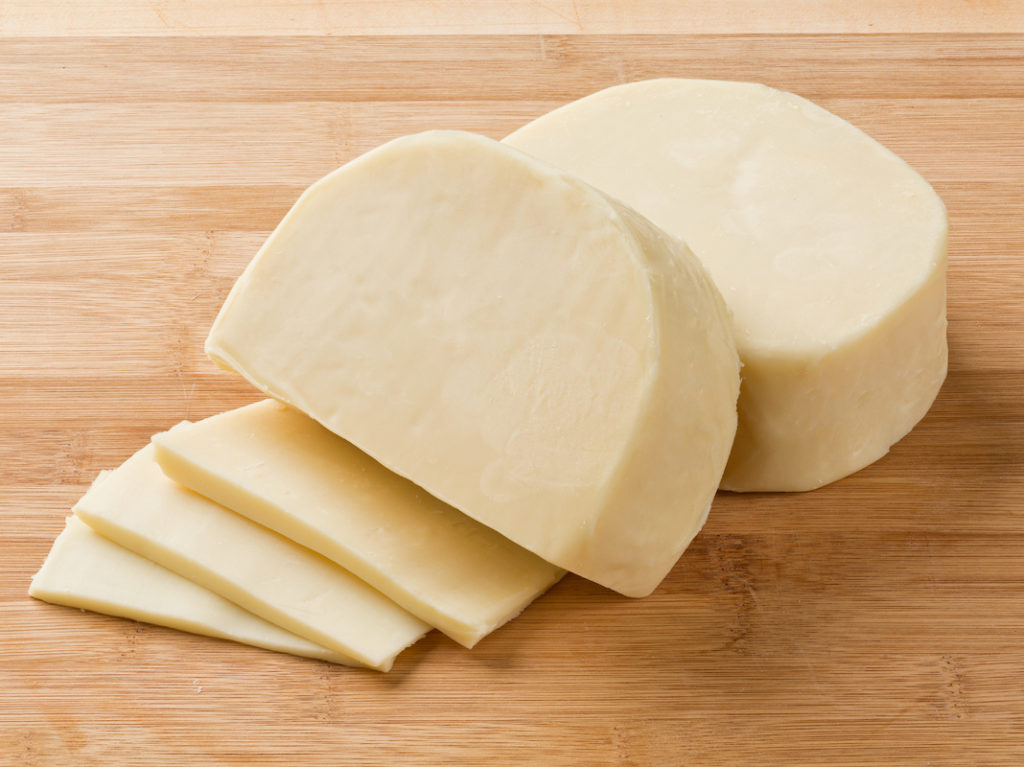
Provolone is an aged pasta filata cheese that finds its roots in the Po Valley of northern Italy. The origins of this Italian cheese date back to Cistercian monks in the territory between the rivers Lambro and Adda. Aged for a minimum of 10 days, Provolone Dolce is the younger version of this cheese.
Unsurprisingly, the Provolone Dolce has a mild flavour profile. On the palate, you will detect hints of nuts and salt, with a smooth texture. When melted, this cheese develops a spectacular cheese pull. Because of this, it is commonly used in grilled cheese sandwiches and other baked recipes.
15. Ricotta

Ricotta is a fluffy white fresh cheese that originates from Italy. Traditionally, it is made from the whey that is left over from making other cheeses. It gets its name from the Italian word for “recooked”. This is because the whey is cooked twice when making Ricotta.
Ricotta is creamy white in appearance and has a slightly sweet flavour. It is a great addition to a cheese omelette on its own or combined with a more complex cheese.
To balance the flavour, you can also use Gorgonzola Dolce. And, if you want more of a cheese pull, you can also add Fontina, Provolone Dolce or Taleggio.
16. Taleggio
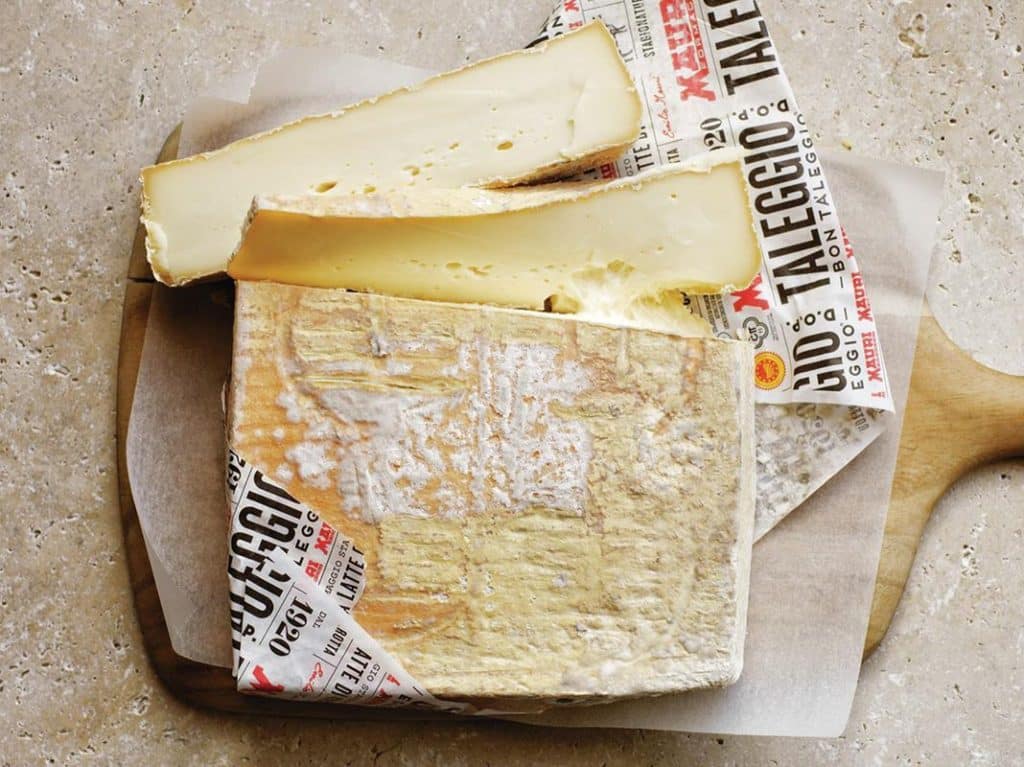
The final Italian cheese on our list is the soft washed rind Taleggio. This traditional Italian cheese dates back to the 10th century. Actually, local artisans named the cheese after its area of origin, Val Taleggio. This picturesque valley is found in the province of Bergamo in northern Italy.
Overall, Mauri Taleggio has a mild yeasty aroma and a rich flavour of cured meats and truffles. Surprisingly, it also has subtle sweet notes which become more earthy near the rind. Its flavour and texture when melted make it a hugely popular addition to grilled cheese sandwiches and, of course, cheese omelettes.
17. Feta
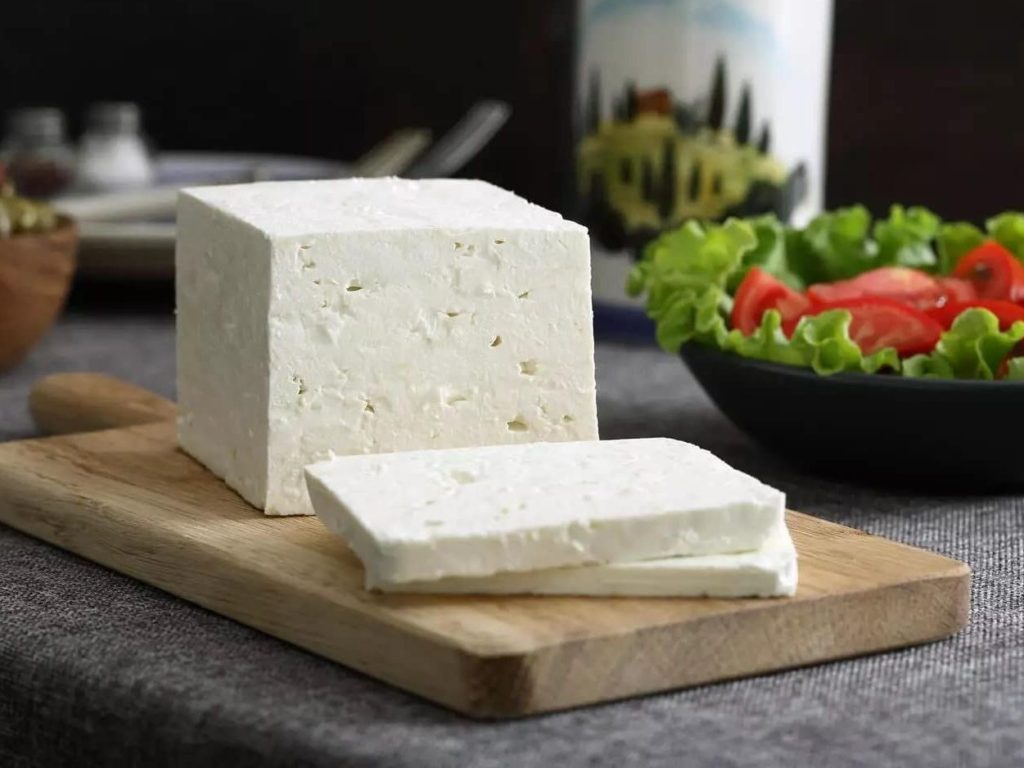
Undoubtedly, Feta is Greece’s most popular and famous cheese. Indeed, its history goes back a few thousand years and it first appeared in Homer’s Odyssey. Traditionally, Feta producers have used a mixture of sheep’s and goat’s milk (60/40%) and aged their cheese in barrels filled with brine.
Maturation can last up to six weeks and helps Feta develop its complex and savoury flavour. Barrel-aged Feta is tangy with a surprisingly creamy texture. As for the flavour, it ranges from peppery to sweet.
While it won’t melt quite as spectacularly as Mozzarella or Raclette, Feta still is a great addition to a cheese omelette for flavour.
18. Manchego
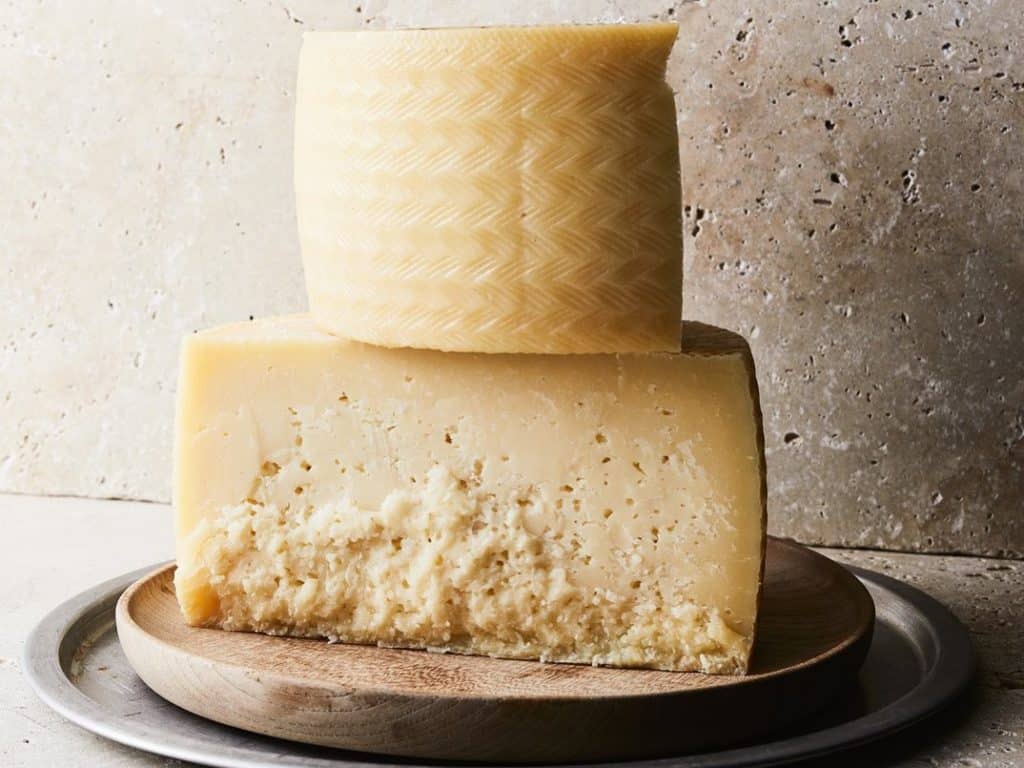
Without a doubt, Manchego is Spain’s most popular cheese and accounts for one third of the country’s entire cheese production. Originating from La Mancha in central Spain, this pressed uncooked cheese is traditionally made using the rich, fatty raw milk of Manchega sheep.
Indeed, this pressed cheese is instantly recognisable due to its herringbone rind formed by dried esparto grass moulds.
In a similar way to Comté and Gruyère, Manchego demonstrates an incredible range of flavours. Be prepared for symphonic strokes of fruits and nuts, along with zesty undertones of piquancy. However, because of its lower moisture content, it won’t melt quite as well.
19. Gouda
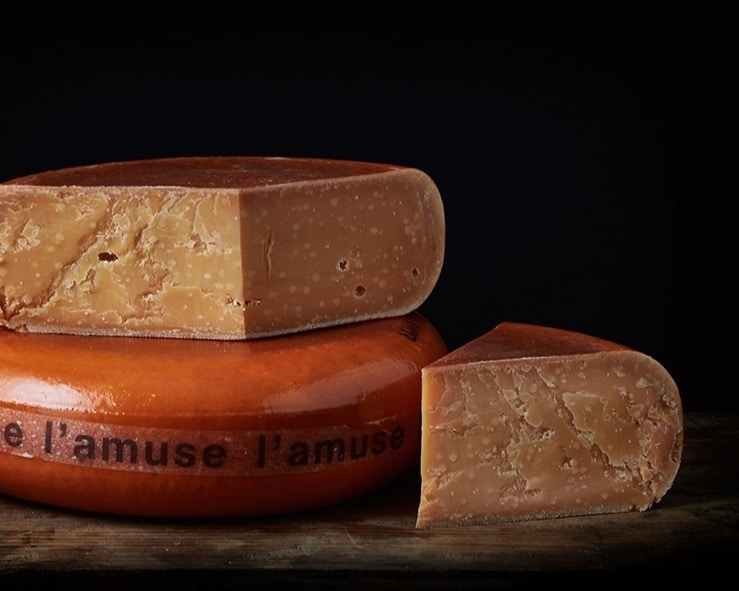
The final cheese in our list of best cheeses to use in an omelette is Gouda. This pressed uncooked cheese is easily the Netherlands’ most famous export. Gouda comes from the area surrounding the town of Gouda, Southwest of Amsterdam. However, it was never actually made there. Indeed, Gouda was a market place for food products where the cheese was first sold.
Our pick for an omelette is a 24-month matured cheese such as the pictured L’Amuse Signature Gouda. Even though this aged cheese has a low moisture content, it still melts in your mouth.
Aged Gouda’s flavour is incredibly complex and includes notes of salted caramel and roasted hazelnuts. Combine this Gouda with Ricotta for a sweet omelette. Or contrast its flavour with a savoury Cheddar or Monterey Jack for a more balanced omelette.
Best cheeses for an omelette
As you can see, you have a large number of options when it comes to cheese in omelettes. My personal favourite is a combination of three: Cheddar, Comté and Gorgonzola Dolce. And the great thing about those three is that there are also fantastic table cheeses.
Now, tell me. What’s your favourite cheese to use in omelettes?




How about Jarlsberg?
That’s a great option too. The recipe for Jarlsberg was inspired by Emmentaler that’s on our list. But the Norwegian cheese is a bit milder in flavour.